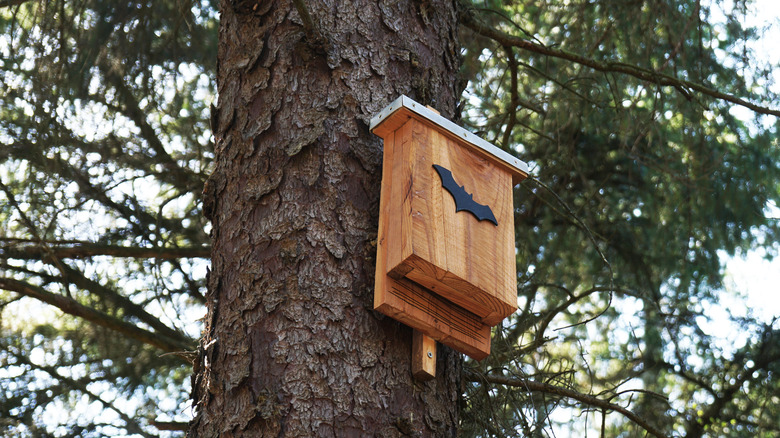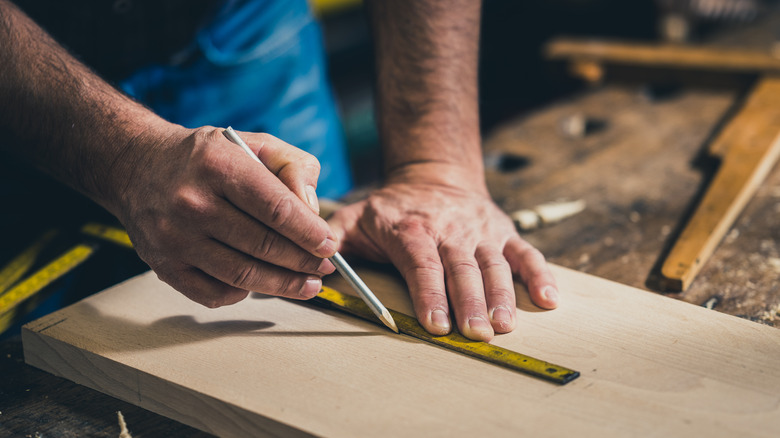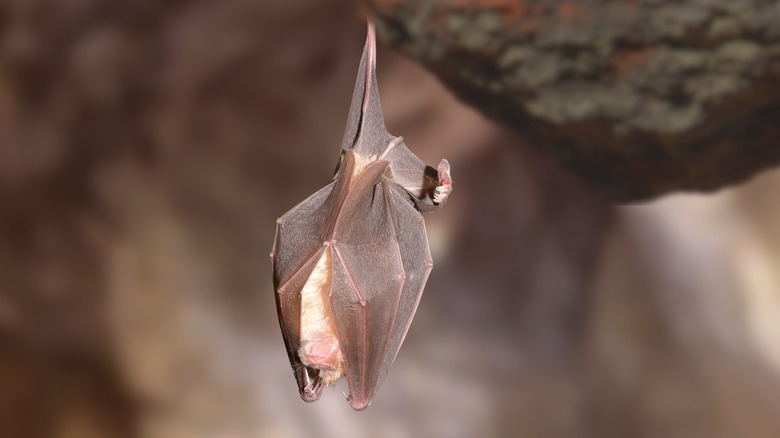Why Building A Bat House Might Be The Mosquito Solution Of Your Dreams
Bats are often praised for eating up to 1,000 mosquitoes an hour, making them welcome guests in many backyards. More research is needed to determine exactly how much we can rely on bats for pest control, but evidence from a 2014 University of Wisconsin study suggests that bats eat a wide variety of mosquito species and that they prey on mosquitoes frequently. Bats, particularly little brown bats, may help keep mosquitoes at bay in your backyard. One of the best ways to attract bats to your yard and support struggling bat populations in the process is to add a bat house to your outdoor space.
While bats held a negative reputation for many years, recent education efforts have shed new light on their importance to the environment and to humans. Not only do bats eat insects including mosquitoes, which carry serious diseases on top of being downright annoying, but they also act as pollinators, supporting agriculture around the world. Bat populations in many regions are struggling due to white nose syndrome, wind turbines, and habitat fragmentation. Creating a safe space for them to snooze and reproduce is a great way to help them while decreasing your yard's mosquito populations in the process.
Building your bat house
Learning how to build a bat house is fairly straightforward and experienced woodworkers should be able to tackle the project in just a couple of hours. As long as you already have key tools like a saw on hand, creating a bat house can cost as little as $10 to $20, since all you need is ½-inch-thick plywood or cedar, silicone caulk, and exterior grade screws. It's important to reference an in-depth bat house design like the ones in the Bat House Builder's Handbook because, while they may appear simple from the outside, bat houses require a few important components in order to sufficiently home these unique creatures.
Effective bat houses require interior grooves or mesh for bats to hang from, strategically sized openings for bats to fit through while keeping predators out, and a landing area measuring at least 4 inches high. They also need to keep moisture out while allowing the sun to heat the house. If the notion of building a DIY bat house doesn't appeal to you, you can still help bats and decrease the number of mosquitoes in your yard by purchasing a pre-built bat house, which can range from about $30 for a simple box from Chewy to around $140 for a triple-chamber bat house from Big Bat Box.
Factors to keep in mind
Whether you build your own or purchase a bat house, the positioning is just as important as the structure itself. It's best to mount it on a wood or stone building. Placing it beneath the eaves of a house can provide protection from predators. Aim for 15 to 20 feet off the ground, but as low as 12 feet up can work as well. In order to create the ideal level of warmth within the bat box, mount it in a location that gets at least six hours of sun each day.
Keep in mind that there is no magic wand for getting rid of mosquitoes, and adding a bat house to your yard might not make a noticeable impact overnight. While little brown bats do consume huge amounts of mosquitoes and other insects, there are over 1,000 species of bats and some do not eat mosquitoes. Combining bat boxes with other strategies like attracting mosquito-eating birds to your yard and planting herbs that repel mosquitoes can yield better results than one route alone. Leveraging solutions like these not only results in fewer mosquitoes in your yard, but also helps your local bat and bird species, which in turn benefits your garden thanks to added pollinators and pest control.


